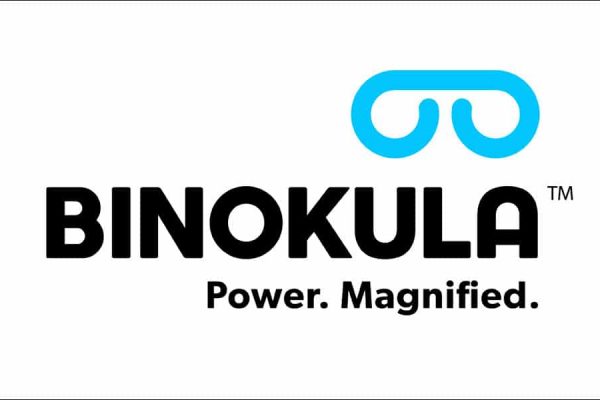In a world where AI plays an essential role in jobs and job seeking, the onus is on businesses to maximise their value.
Automation is not a new idea: in Greek mythology, Hephaestus, the god of metalworking, summoned animate metal statues to assist with his craft.
Today artificial intelligence or AI is a branch of computer science that deals with the simulation of intelligent computer behaviour or the machine capability to imitate intelligent human behaviour.
AI technology is entering workplaces at record speeds, soon expected to have a presence in most industries.
The World Economic Forum has described AI as a crucial element in the fourth industrial revolution, and a force that will rapidly change our workplaces and world. In 2017 advisory firm Gartner predicted that 2020 would be the crucial year in AI employed systems as it becomes a positive job motivator and generates 2.3 million jobs.
Now that we’re here, Deloitte researchers have said we are transitioning from questions of ‘could we’ to ‘how should we’ in terms of work.
Yet in popular culture, and in the eyes of employees, AI is portrayed as a threat. Employees are worried about losing their jobs, fearful they’ll be replaced by machines. Similar concerns are top of mind for those advocating to upskill workers and create new jobs amid the disruption.
Global representatives discuss the implications for work at the 2016 World Economic Forum. From far left: Ya-Qin Zhang, President, Baidu.com; Andrew Moore, Dean, School of Computer Science, Carnegie Mellon University; Connyoung Jennifer Moon, Chief Anchor and Editor-in-Chief, Arirang TV & Radio; Stuart Russell, Professor of Computer Science, University of California; Matthew Grob, Executive Vice-President and Chief Technology Officer, Qualcomm. Credit: AI Research.
Questions of cost & quality
With changes in technology, questions of practice and process are arising. Organisations need to adapt to harness the potential of AI for business, as well as to protect employees.
Opportunities abound. Studies such as PwC’s The Impact of Automation on Jobs finds that automation opens up opportunities for business – including, but not limited to, allowing firms to drive cost efficiencies and improve the cost and quality of their products, with new ability to collect, store and analyse data at scale and speed.
New jobs in creative digital fields such as AI programming and operating are emerging.
The AI and robotics sector require professionals who understand AI and robotics at different stages along with the product and service development cycle.
In 2019 the Manufacturers Alliance for Productivity and Innovation Foundation, a non-profit manufacturing leadership network, said that introducing AI into the manufacturing value chain would create new hybrid roles, with humans enabling machines, and AI augmenting human capabilities. Driverless cars, for example, need highly skilled people to invent and create linked products.
BMW’s driverless cars still have a lot to learn, with specialists evaluating, coding and testing driving data to build safer, less stressful driving experiences. Credit: BMW.
Specialist of many varieties, such as health technologists and nurses, will benefit from using AI.
Yet adopting AI and associated technologies inevitably also carry financial – not to mention social costs – as we transition to new ways of working. Jobs that can be automated, such as cashier, servers and drivers, will certainly be replaced, and businesses will need to be strategic in their AI adoption approach, offering upskilling opportunities where they can.
It’s argued the impact of AI and robotics on employment actually goes far beyond jobs, creating new areas of knowledge and capability for humankind. Reducing environmental damage is a big one – with a 2019 report showing global greenhouse gas emissions being reduced by 4.0%, and a greater onus on companies to show how they’re helping solve climate problems.
This can be seen with companies looking more to environmental metrics as a baseline indicator of success. For New Zealand’s widest team of data specialists, Stellar Consulting, clients are now looking to CO² as a key performance indicator, alongside financial and relationship metrics.
The 2019 Edelman census finds people trust their employers to act in their best interests, more so than they trust governments, nongovernmental organisations, or even business in general. With business in the hot seat, what are some of the ways AI is being used to protect jobs?
Making matches
AI is playing an increasing role in recruitment.
In one sense AI shapes the gig economy with its easy streamlining of business processes. In another, it’s putting the onus on employers to improve work conditions.
Now AI is enabling less job search and more matchmaking.
Not too long ago if you wanted to see what jobs were available, job seekers refer to job boards like Seek, key in keywords about their ideal role, and peruse the responses.
Now, job searching follows a more holistic approach. Answer a few questions about your capabilities and preferences, and link through to your LinkedIn and other online profiles. Early talent recruiter Headstart and collaborative job search platform Glassdoor are programmed to not just identify jobs but also analyse the companies who logged the openings, based on things like performance areas, culture and reputation. They then bring up highly personalised matches in terms of job and company.
AI is also being used to expertly analyse CVs, demographic qualities, compare pay scales, and the hiring process. Candidates who meet diversity criteria could be prioritised and follow standards of fairness in the recruitment process.
AI & accessibility
AI can easily and cost-effectively help employers honour their ethical and legal responsibilities to develop diverse workforces, and maximise the value that diversity brings to the workplace.
Technologies like Seeing AI app and IntelliGaze, and devices such as the Amazon Echo and Google Home, can be employed to help meet these obligations and support employees with disabilities with working and collaborating.
Workplace flexibility is now a critical issue for the workplace. This is especially the case for younger generations, who are more actively connected to digital technology. Businesses are looking to adapt to enable flexible working conditions and collaborative workspaces using platforms like Google Hangouts and Microsoft Yammer, and thinking about how they can allow workers to stay in the workplace longer.
Automate to survive or automate to thrive?
When ideas of automation were established the Greeks were thinking magic, but it was with the steam power factories of the 1800s that the concern of ‘technological unemployment’ was first raised.
As we continue to develop AI mechanisms and solutions, we meet the world unprecedented impact, scope and velocity of change. Must it involve trade-offs and competition?
Amid the global calls for AI to be programmed to steer away from latent bias, New Zealand, has the front-foot on these questions as the first country to release a government Charter of AI, with questions being asked from business leaders about how AI could go beyond focus on efficiency to be used for the public good.
On a project-to-project scale, Stellar Consulting has commented that “AI will only ever be as good as the people who design it and the way they think.”
“Without good data, automated decisions will be based on false assumptions… The decisions made by artificial intelligence are only as good as the data on which they are built and operate across.”
Not attending to the risk of latent bias will cause issues of employee-wellbeing, hiring fairness, diversity to compound and continue.
As AI capabilities develop in their sophistication and are better able to align them to human needs, the questions organisations should be asking are not ‘If…?’ or ‘When?’.
Now, the only real question organisations need ask is, ‘How?’







